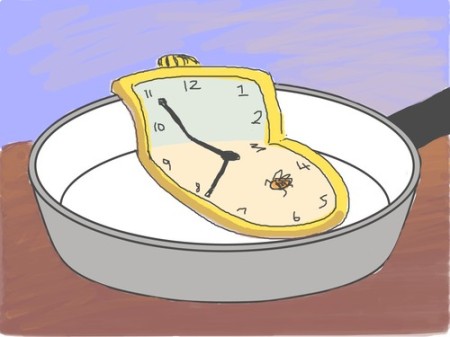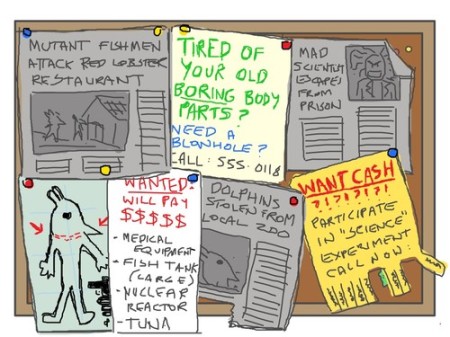or: ‘Is There An App For That?: The Evolution Of Art and DrawQuest
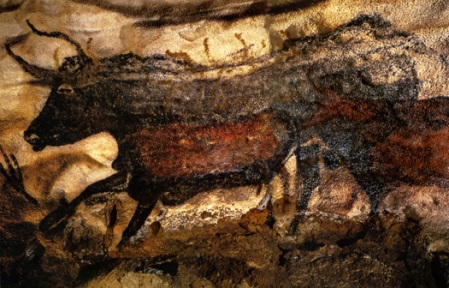
IMAGE: Great Black Bull from Lascaux Caves, photograph by N. Aujoulat
Several millennia ago something unprecedented happened…
(I wasn’t there, but I heard about it from a guy.)
One evening, in a moment of fleeting respite from the onerous, unceasing pursuit for food and safety and shelter, one of humanity’s ancestors sat staring at a cave wall. Secluded from the instinctual fight-or-flight pressures of the day, lost in a moment of reflective quietude, he or she (let’s split the difference and say ‘s/he’ – I hear that it was a popular name at the time) peered up at this barren rock, watching it flutter and warp as the firelight spilled across its surface, and suddenly, out of nowhere, s/he did something remarkable. S/he did something that in the history of human existence – up until that very moment – had never been performed.
S/he imagined.
Rather than simply seeing a slab of stone, a nothingness that marked the borders of her/his world*, s/he saw a stampede of horses, a deer, a lone cow. S/he saw motion and vitality and life, a kinetic vibrancy of being that compelled her/him to action. And in that moment, seeing all this splendour in her/his mind’s eye, s/he decided to bring these images into being. The result was cave paintings of staggering delicacy and grace, testaments to the intimate knowledge of the natural world in which this artist was immersed. I’ve discussed these cave paintings before, noting the way in which these vivid portraits, despite calling to us from the dawn of artistic expression, remain profoundly moving to this day, reminding us of our innate human desire to reflect our world through our own unique experience.
Lambros Malafouris, a researcher in Cognitive Archaeology from the University of Cambridge, has spoken of this act – or rather, the whole process of human beings taking these tentative steps into the world of artistic expression – as a transformative moment in our cognitive development. For Malafouris, this prehistoric Art is the herald of every advancement in human cultural, social, and intellectual achievement that has arisen in its wake, because through these images we see evidence of an evolution in both our capacity to engage in more abstract thought, and, ultimately, to reason ourselves into a more complex state of self-awareness as embodied, social beings.
In the article ‘Before and Beyond Representation: Towards an Enactive Conception of the Palaeolithic Image’**, Malafouris speaks of the way in which images such as these offered human beings a space in which to explore the action of making meaning itself. By proving themselves able to depict the idea of an animal or object in a series of artfully crafted lines and shapes, by evoking concepts abstracted from mere representation, human beings were able to expand their thinking beyond simplistically mirroring the physical world, and into the realm of the imagination. In so doing, they made the image on the rock wall itself an extension of their own evolving mind:
[T]he emergence of the image made possible a new special kind of perception of the world not previously available. The implication … is that the question to ask about Palaeolithic imagery is not ‘What kind of mind was needed to made those images?’ but instead ‘What kinds of minds are constructed by perceiving those images?’ (p.295).
These early humans were not simply attempting to reflect the world, to create a series of symbols that stood in one to one relation with observable objects (‘This squiggly line equals that horse’s head over there’), they were explorations of concepts, articulations of elements abstracted from direct correspondence. These signs and symbols, he argues, are therefore not merely evidence that we had intellectually advanced, they actually became part of the process of that advancement. Human beings, through the act of interpretation and imagination, were detaching themselves from direct experience in order to examine the image itself, and the concepts that this aesthetic object evokes:
‘What I suggest is, that the image makes it possible for the visual apparatus to interrogate itself and thus acquire a sense of perceptual awareness not previously available.’ (p.298)
In a later article, Malafouris speaks of this malleability of the human intellect as a kind of plasticity: ‘We have a plastic mind, which is embedded and inextricably enfolded with a plastic culture.’*** Even more evocatively, he goes on to describe this cognitive evolution as its own artistic work-in-progress:
‘Like a piece of clay, thrown onto the wheel of culture, the human mind and brain is subject to continuous re-shaping, re-wiring, and re-modelling.’ (p.55).
But however one describes it, by projecting ourselves and our imaginations out onto the world – through paint, onto cave walls – our surroundings became our canvas, and therefore became an expansion of our own minds, literally a new environment into which our abstract thought advanced and evolved.
But let’s be honest for a second. Horses? Cows? Resolute hunting parties and surrealist antlers? Earthen hues and magisterial sprawls? A delicacy of brushstroke both tender and robust; proud and yet spritely? Landscapes that capture the graceful and the thunderous in one? That bring order to the transitory chaos of life through the sculpted stasis of an artist’s representational outpouring?
Pfft.
How Palaeolithic.
After all, a stampeded of unbridled stallions is so 30 millennia ago. Nowadays we have My Little Pony. And sure, before the invention of the wheel cows probably did look like majestic, statuesque beasts, radiating a noble, bovine tranquillity, but in the 21st century most cows come squashed between two limp sesame seed buns, discoloured by dry pickles, and served to us by an aggressively vibrant clown. In fact, your whole theme and subject matter is outdated, guys. We don’t pay homage to the totemic, unknowable beings that we methodically pursue and devour, any more. Now we have celebrities. Sure, okay, we do tend to set our emotional metronomes to every minor fluctuation of these creatures – particularly, it seems, the ones called ‘Bradley Pittington’ and ‘the Miley Cyrus’ – and yes, we do seem to hunt them for sport and scrutinise their every move…
But at least we don’t devour them. Right?
…Okay, okay. Shut up.
In any case, you’re out of touch, stupid precursors-of-all-modern-Art-and-culture-with-your-revolutionary-wellsprings-of-imagination. A bunch of pictures of non-anthropomorphised animals (who cares?) painted on rocks (that’s a good way to need a tetanus shot) with hand-fashioned pigments (what no neons?) in a cave (where there is probably no parking at all)? Geez. Try harder next time, grandpa.
Luckily, since our ancestors and their triumphantly evocative advancement into a more imaginative self-awareness is so thoroughly dated, we have DrawQuest.
I first became aware of DrawQuest only a few weeks ago. I was gifted a second-hand iPad, and like the witless luddite I am, at first had little idea what to do with it. ‘But where are the small squares with which I press the letters?’ I asked. ‘Where is the bit with the scroll wheel that I will inevitably knock onto the floor and step on?’ …Okay, this is all hyperbole, but not by much.
Indeed, although it sounds a little ridiculous, I was ignorant enough of its workings to have a brief flicker of wonder. Here in my hands was this technical marvel (well, it’s first generation and doesn’t even have a functioning camera, but go with me here), suddenly I was peering into a window of colour and light that, with a touch of my finger, could conjure the whole breadth of human history, creativity and inquiry – an object that could near-instantaneously answer my every query, allow me to converse face-to-face with people on the other side of the globe, or show me video of most any kind of cat falling into most any kind of sink.
…So, pretty much the same as any other mass-market computer on sale anywhere – but in tablet form. And with a touch screen that goes swish when I flick my thumb across it.
Only ten years ago an object like this would have been the stuff of science fiction****, but today it is so commonplace I’ve seen people resting their sodas on the screen for want of a coaster, seen them handed to toddlers to bash on the ground for want of a rattle, seen them hurled through the air at decathlons for want of a discus (okay, I made that last one up). But still, this utterly remarkable slab of circuitry and wi-fi wizardry has come to represent the dawning of a new artistic age.
So what could I do with it? What could be worthy?
When Prometheus gifted humanity the treasure of fire it heralded a whole new world order of knowledge and wonder; it represented enlightenment, the capacity to harness and utilise flame, a symbol of self-sufficiency and natural mastery around which all civilisation has blossomed into being… Since being gifted this iPad – had this magical tablet delivered to me like some boon from the gods – I have somehow managed to leave a handful of passengers stranded in layovers on Pocket Planes (a game it is literally impossible to lose), failed to see what all the fuss is about with Angry Birds (a game I’m fairly certain is about the perils of imperialism …think about it*****), and heard myself squee with a wholly juvenile glee at the overblown nostalgic bombast of Major Mayhem (a game I truly cannot recommend highly enough – particularly as it is completely free).
But then, after a brief sojourn through Draw Something – an asynchronous Pictionary-lite game – I stumbled into DrawQuest…
DrawQuest is a free iPad app designed to act as a launching point for creative expression. Despite the adventurous title, the game is not a platformer or an RPG – it simply, elegantly, offers an opportunity to engage in creative play, providing a space, a canvas, and the opportunity of exhibition, for any and all illustration.
The app gives you a rudimentary, but surprisingly versatile, art supply kit – a pencil, paintbrush, marker, eraser, and a rainbow of colours and shades (with more that unlock relatively effortlessly), and each day presents a new ‘Quest’ – essentially a short prompt that is offered as inspiration, perhaps a picture of an empty body of water with the question, ‘Who’s swimming?’ Should you wish, this quest can be just as easily ignored, however. The idea is to draw straight onto the tablet using your fingers (or stylus if you have one), adding to, overwriting, or ignoring the prompt as you see fit, with the invitation to scrap or save whatever you like.
To better explain what I am talking about, I have attached a few of my rather dire offerings to this post, but do check out the finer works of other contributors here…
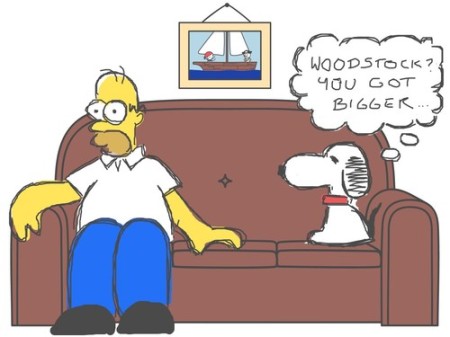
IMAGE: ‘Who’s Sitting On The Couch?’ by DrawQuest and Me

IMAGE: ‘Help The Witch Move Into Her New House’, by DrawQuest and Me
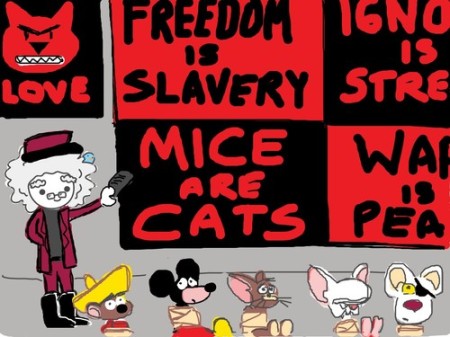
IMAGE: ‘Build A Contraption To Catch A Mouse’ by DrawQuest and Me
There are no prizes, no fail-states, no commercials for other products. There is no shilling for in-app purchases, or attempts to up-sell. It is simply a safe, supportive gathering of people who love to doodle and to let their minds wander. Indeed, aside from the opportunity to just play around and be inspired by others, it is that lack of pressure that is so refreshing. DrawQuest is, on the whole, is by design peaceful and supportive. You cannot vote down anyone else’s work – you either like it, or move along to something else. No one is going to shred one other in a snippy comments section. People can follow your work, and you can follow theirs, or you can just go meandering through the galleries of the most popular piece of the past few days.
Yes, DrawQuest can sadly still be littered with offerings that present no more than hastily scrawled pleas for followers (I truly have no idea why – having people ‘follow’ a stream of constant pleas for following sounds to me like a Sisyphean nightmare), or apologies such as ‘Sorry! Can’t think of anything to draw! LOLS!’, bizarrely only posted in pursuit of the game’s almost-arbitrary currency (the only thing it allows you to ‘buy’ is more colours with which to write ‘I can’t think of anything to draw…’, again, rolling a rock up a hill to nowhere). But dig down beyond these off-handed scribblings and there is a wealth of both extraordinary artistic acuity and playful imagination on display.
People take these daily prompts and sculpt them into some wildly unique responses. A trigger such as ‘What time is it?’ and the image of a partially rendered clock face, will elicit playful (if slightly predictable) Adventure Time scenes; will inspire small murals of daily life; stick figure vignettes of people racing to work; moments of dreamers lost in reverie; the Grim Reaper on a coffee break; groundhogs tentatively sniffing the air in search of a shadow; literary allusions to The Watchmen and The Time Machine.
And as I scan the depths of this disarmingly innocuous app, returning to it each day to exercise my own now-atrophied drawing ‘skills’ (and yearning for a stylus to replace my clumsy fingertips), I am reminded of those sublime prehistoric images, hidden underground in Lascaux, and more than a little of the cognitive growth described in Malafouris’ theories…
Because there truly is something of the cave wall in these images – and not just in the immediacy with which rock face and iPad are both stroked by humanity’s insistent fingertips. Sure, one is pigment while the other is pixel; one communicates across the incomprehensible chasm of several millennia, while the other is but electronic vapour, born in an instant and dissolved into the labyrinthine void of the internet; but each is an attempt (however seemingly frivolous and ephemeral the latter may at first appear to be) to communicate a singular vision, to express a unique point of view. Fundamentally, both – like all artistic expression – are stirred into being from the same elemental desire to reach out beyond the limitations of oneself and connect.
DrawQuest taps into our most elemental creative impulses, and stirs that desire to reach out beyond oneself to try to communicate something individual – even if it has been funnelled through a reverberating chamber of memes and allusions and influences. Perhaps it’s that same urge that motivates us to pour ourselves into Twitter and facebook and Vine, that fuels the anarchic splendour of the internet itself. For some it’s a longing to mark our territory, for some a way to connect, for still others, painting themselves onto zeros and ones and dispersing themselves into the air, it is a way to reach even further beyond the limits of their own space, to detach from canvas and paint and environment, free-associating and expanding in the untrammelled joy of creativity.
Once our cave wall was a secluded space, a cherished place, beside the warmth of a hearth fire. It was dark, and treasured, a space that we grew into, expanded ourselves and our vision of the world through and upon. Now we project ourselves into the cyber ether. A mesh of pop culture and self-referential irony, a swirl of influences and stagnations and innovations projected onto the eternally insubstantial. Once we needed cave walls to give our imagination space to grow upon; now even our walls are imaginary. Now we create incorporeal images, refracted through the diaspora of an exponentially expanding collective unconscious.
DrawQuest offers a pop culture panoply refracted through the lens of a daily drawing prompt, with no expectation or obligation or risk of censure – just the invitation to dream, and the opportunity to hear the squeak of our plastic minds rubbing up against the endlessly shifting expanse of our metaplastic culture. It is a multiform cave wall, at once impermanent and preserved, frivolous and profound, exhibitionist and yet profoundly personal. It is a mass of contradictions, a breeding ground for snarky cynicism and heartfelt earnestness.
It is us, in all our goofy, dreamy splendour, stretching out into the unexplored darkness, compelled to decorate the space we find there, and in so doing, to meet ourselves, evolving into something as yet unknowable.
…Perhaps with the occasional picture of Grumpy Cat chastising Justin Bieber.
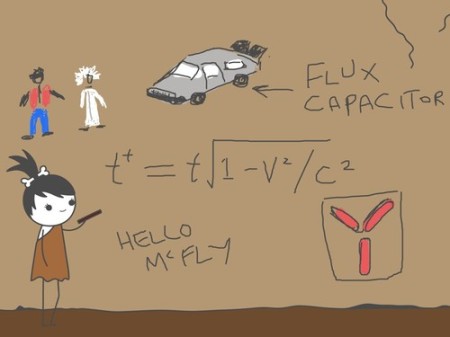
IMAGE: ‘What Is She Drawing On The Cave Wall?’ by DrawQuest and Me
* ‘Her/his’ was s/he’s nickname, probably?
** ‘Before and Beyond Representation: Towards an Enactive Conception of the Palaeolithic Image’, by Lambros Malifouris. Image and Imagination: A Global History of Figurative Representation, edited by C. Renfrew & I. Morley (Cambridge: McDonald Institute for Archaeological Research, 2007, pp. 289-302.) An online version can be found here…
*** ‘Metaplasticity and the Human Becoming: Principles of Neuroarcheology’, Journal of Anthropological Sciences Vol.88, 2010, pp.49-72, p.55
**** In particular I’m thinking of that ugly blinking remote control-looking thing that Al used to walk around with in Quantum Leap …although, to be fair, perhaps time travel doesn’t allow for great Wi-Fi.
***** Don’t think about it.
